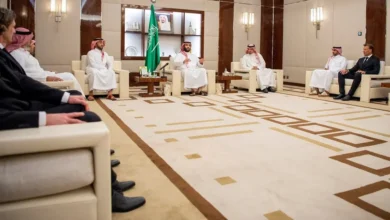Sixty years of sound: The cassette’s past, present and future in Egypt

Sixty years ago, the compact audio cassette debuted at the German Radio Exhibition. Behind this innovation was Lou Ottens, a Dutch engineer who, the story goes, was home one night listening to music and grew frustrated with his reel-to-reel tape recorder.
So the head of product development for the Philips factory in Hasselt, Belgium, decided to design something that was cheaper, more mobile and easier to use. And he did, creating the world’s first compact cassette system, in which spools of magnetic recording tape were encased in a small plastic body. Instructions for the EL 3300 speak to Ottens’s early aims.“Now that you are the proud owner of this handy pocket recorder,” the manual reads, “you can record and play back wherever or whenever you wish.” The apparatus was “so easy to operate”, the document adds, “you will do it almost automatically.” The directions to follow seemed unnecessary.The story of the cassette’s invention is often the only part of its history that is paid attention to. But what happened once the medium moved beyond the walls of the Philips workshop and its 1963 pavilion in Berlin?
Cultural production at your fingertips
Cassettes enabled an unprecedented number of people to create and circulate new cultural forms. Nowhere is this more evident than in Egypt, where they became a culture lasting decades – empowering listeners from all walks of life to become cultural producers for the first time.
The advent of Egypt’s cassette culture was, in part, a transnational affair. In the 1970s and 1980s, more Egyptians were on the move than ever before. The Middle East boasted the world’s fastest-growing air market and migration was popular in the midst of the oil boom.
Hundreds of thousands of Egyptians ventured out in search of higher wages. Often ending up in Libya, Iraq and the Arabian Peninsula, they frequently sent money home and bought consumer durables abroad, evidence of a newfound purchasing power. Among the more common objects acquired by migrants and other Egyptians on the go were cassette players.
But international travel was not a prerequisite for procuring the increasingly coveted commodity. In Egypt, the arrival of cassettes coincided with the dawn of mass consumption, ushered in by the “infitah” (economic opening) in the aftermath of the 1973 Arab-Israeli War.
Philips showcased its latest cassette players through its local branch, which had been nationalised by President Gamal Abdel Nasser in 1961 but kept Philips in its name. Its competitors, like National, Toshiba and Samsung, relied on licensed agents to offer their products.
Cassette technology started to feature in the press, shown alongside artists and athletes – even President Anwar Sadat, who appeared to want to look like an “ordinary” citizen. To convey this image, Sadat was photographed listening to a tape outdoors.Cassette players and tapes soon became essential to the modern home, part and parcel of a broader economy of desire. A thriving black market for cassette technology grew because it allowed many Egyptians to reach an audience beyond the state-controlled channels of cultural production.
Egypt’s loudest voices were not on the radio
Numerous voices contributed to the mix tape that is modern Egypt. Ahmad Adawiya, a pioneer of shaabi (popular) music, sang about things listeners could relate to in the Arabic they spoke daily. He was beloved by many but angered others and featured in debates on the “downfall” of music and the “death” of public taste long before mahraganat stars, who mix popular music with hip-hop, faced the same criticism.
Joining Adawiya on cassettes was Sheikh Imam, a blind performer and political dissident whose subversive anthem-like compositions resurfaced during the 2011 Egyptian Revolution. Imam set the poetry of Ahmad Fouad Negm to music, challenging state-engineered accounts of contemporary events on non-commercial recordings.
Then there was Sheikh Abd el-Hamid Kishk, a skilled orator who did not shy away from criticising those in power from the mosque pulpit. Well aware that his passionate sermons were being taped, Kishk once cautioned his congregation that police officers were among them, recording his remarks while pretending to pray.
Adawiya, Imam and Kishk used the same technology to circumvent censorship and reach a mass audience in the absence of Egyptian radio, which came under state control in 1934 and refused to give them airtime.










